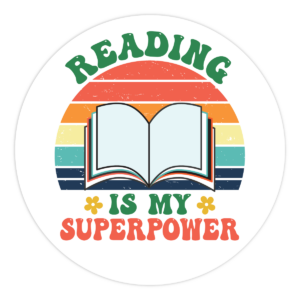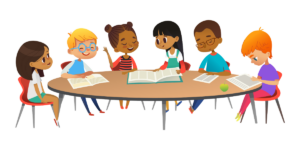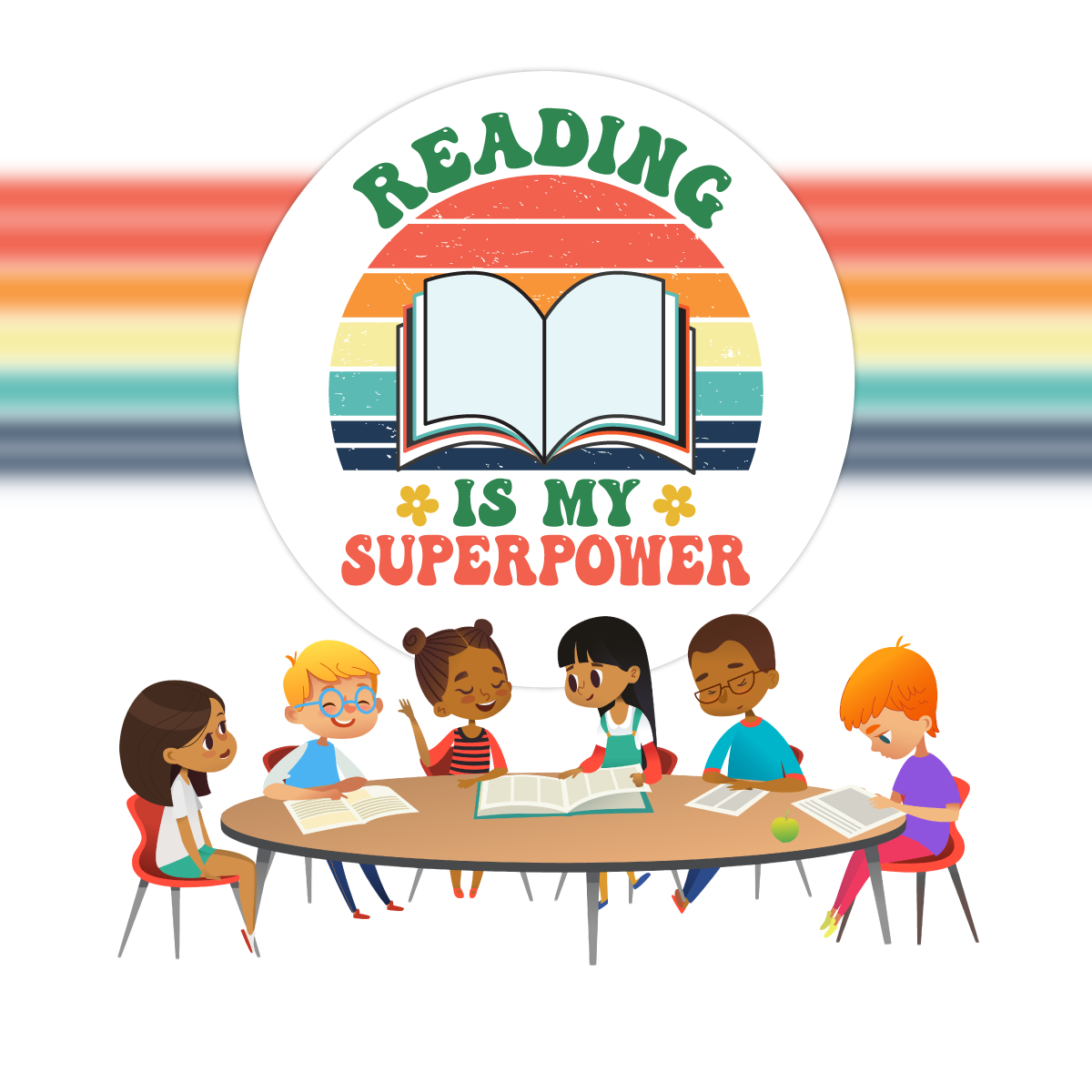 In classrooms where students thrive as independent, engaged readers, self-regulation is not just encouraged—it is explicitly taught, modeled, and cultivated. Self-regulation is the ability to manage one’s thoughts, emotions, and behaviors to achieve a goal. In reading, self-regulation helps students plan, monitor, and adjust their approach by setting goals, using strategies like summarizing or questioning, and reflecting on their comprehension. Strong self-regulation skills empower readers to persist through challenges, stay engaged, and take ownership of their learning. When students take ownership of their reading process, they develop agency over their learning, becoming confident in their ability to make meaning from complex texts. Reciprocal Teaching, a structured reading comprehension strategy, provides a powerful framework for fostering self-regulation, particularly when implemented through an asset-based, culturally responsive lens.
In classrooms where students thrive as independent, engaged readers, self-regulation is not just encouraged—it is explicitly taught, modeled, and cultivated. Self-regulation is the ability to manage one’s thoughts, emotions, and behaviors to achieve a goal. In reading, self-regulation helps students plan, monitor, and adjust their approach by setting goals, using strategies like summarizing or questioning, and reflecting on their comprehension. Strong self-regulation skills empower readers to persist through challenges, stay engaged, and take ownership of their learning. When students take ownership of their reading process, they develop agency over their learning, becoming confident in their ability to make meaning from complex texts. Reciprocal Teaching, a structured reading comprehension strategy, provides a powerful framework for fostering self-regulation, particularly when implemented through an asset-based, culturally responsive lens.
By integrating Reciprocal Teaching with the Active View of Reading Model, we ensure that students are not just passive consumers of text but active constructors of meaning. This approach acknowledges that reading is an interactive, strategic process that requires metacognitive awareness, social collaboration, and purposeful engagement—all of which are deeply tied to agency.
What is Reciprocal Teaching?

Reciprocal Teaching is an evidence-based instructional approach designed to improve reading comprehension by engaging students in structured, scaffolded dialogue around a text. Developed by Palincsar and Brown (1984), it involves four core strategies:
- Predicting: Students anticipate what will happen next in a text based on prior knowledge, textual clues, and their own experiences.
- Questioning: Students generate and answer questions about key ideas, themes, or confusing elements in the text.
- Clarifying: Students identify difficult words, phrases, or concepts and work collaboratively to resolve confusion.
- Summarizing: Students synthesize the main ideas of a passage, retelling the text in their own words.
These strategies support students in actively engaging with text, making their thinking visible, and developing metacognitive control over their reading process. When implemented well, Reciprocal Teaching shifts the cognitive load from the teacher to the students, fostering independence and self-regulation.
Reciprocal Teaching as a Self-Regulation Tool
John Hattie’s research on self-regulation (effect size = 0.54) and Reciprocal Teaching (effect size = 0.74) confirms the power of this approach in significantly enhancing student learning. His findings show that when students engage in metacognitive thinking—such as reflecting on their comprehension and selecting appropriate strategies—they develop deeper reading proficiency and academic confidence.
Reciprocal Teaching fosters self-regulation through:
- Goal-Setting: Before reading, students set personal comprehension goals based on their strengths and growth areas.
- Strategic Monitoring: Through questioning and clarifying, students assess their understanding and adjust their approach.
- Reflection and Adaptation: Summarizing and discussing with peers helps students refine their strategies and apply them to future texts.
The key to maximizing this model is ensuring that students are positioned as active meaning-makers, not just recipients of knowledge—a principle central to both culturally responsive pedagogy and the Active View of Reading.
Standards-Based Connections: Reciprocal Teaching in Action
Reciprocal Teaching directly supports several Common Core State Standards (CCSS) for Literacy, including:
- CCSS.ELA-LITERACY.RI.3.1: Ask and answer questions to demonstrate understanding of a text, referring explicitly to the text as the basis for answers. (Questioning & Clarifying)
- CCSS.ELA-LITERACY.RL.4.2: Determine a theme of a story, drama, or poem from details in the text; summarize the text. (Summarizing & Predicting)
- CCSS.ELA-LITERACY.RI.5.4: Determine the meaning of general academic and domain-specific words and phrases in a text relevant to a grade 5 topic or subject area. (Clarifying)
- CCSS.ELA-LITERACY.RL.6.1: Cite textual evidence to support analysis of what the text says explicitly as well as inferences drawn from the text. (Questioning & Summarizing)
For example, in a 5th-grade classroom using Reciprocal Teaching with an informational text on ecosystems, students might:
- Predict the impact of a new species being introduced into a habitat.
- Question the role of different organisms within the food chain.
- Clarify the meaning of scientific terms like “biodiversity” or “trophic levels.”
- Summarize how energy flows in an ecosystem.
This structured approach ensures that students deeply engage with the text, align with literacy standards, and develop self-regulation skills essential for academic success.
The Active View of Reading: Centering Student Agency
Unlike passive models of reading that emphasize skill acquisition in isolation, the Active View of Reading (Duke & Cartwright, 2021) highlights the interactive and intentional nature of comprehension. It considers reading as a dynamic process where students integrate background knowledge, linguistic skills, motivation, and executive functioning.
Reciprocal Teaching fits seamlessly into this model because:
- Predicting draws on schema activation, helping students connect prior knowledge to new texts.
- Questioning fosters curiosity, deepening comprehension through inquiry.
- Clarifying builds linguistic awareness, encouraging students to identify and resolve misunderstandings.
- Summarizing promotes executive functioning, requiring students to synthesize and prioritize information.
When taught through an asset-based lens, Reciprocal Teaching acknowledges the rich linguistic and cultural backgrounds students bring to the classroom, making space for their voices, experiences, and interpretations of the text.
Asset Based Practices: Honoring Student Expertise
Culturally responsive teaching (Gay, 2018; Hammond, 2015) emphasizes that students’ cultural ways of knowing, communicating, and interacting with text must be leveraged in literacy instruction. Reciprocal Teaching provides a natural structure for this by encouraging:
- Collaborative Discourse: Many cultures prioritize oral storytelling and collective knowledge-building. Reciprocal Teaching, when facilitated through dialogue, reflects these traditions, positioning students as co-constructors of understanding.
- Linguistic Flexibility: Multilingual learners benefit from clarifying and summarizing in multiple languages, reinforcing their metalinguistic awareness.
- Asset-Based Questioning: Rather than focusing on deficits, questioning strategies should encourage students to explore what they do understand, centering their expertise and interpretation.
By embedding cultural ways of thinking into reading instruction, we reinforce that every student is capable, knowledgeable, and empowered to navigate complex texts.
Reciprocal Teaching as a Pathway to Agency
The intersection of self-regulation, Reciprocal Teaching, and the Active View of Reading creates a literacy experience that is not only cognitively rigorous but deeply affirming. When we intentionally design reading instruction that nurtures strategic thinking, cultural identity, and student voice, we cultivate learners who are not only skilled readers but agents of their own learning journeys.
By positioning students as active participants in meaning-making, we affirm their brilliance, agency, and capacity to navigate the world through text—a foundational step in fostering lifelong literacy and empowerment.
Learn more about advancing literacy and justice for all HERE!
References
- Duke, N. K., & Cartwright, K. B. (2021). The active view of reading: How to conceptualize reading as a dynamic, strategic, and goal-directed process. Journal of Literacy Research, 53(1), 68-89.
- Gay, G. (2018). Culturally responsive teaching: Theory, research, and practice. Teachers College Press.
- Hammond, Z. (2015). Culturally responsive teaching and the brain: Promoting authentic engagement and rigor among culturally and linguistically diverse students. Corwin Press.
- Hattie, J. (2012). Visible learning for teachers: Maximizing impact on learning. Routledge.



